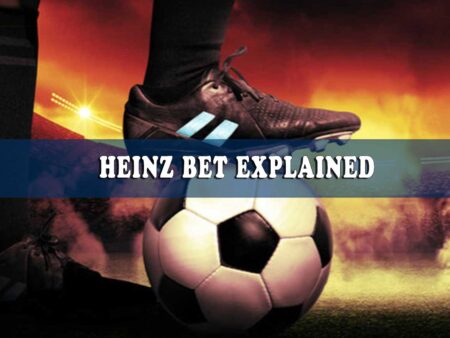Puck line betting opens up the door to potentially more lucrative odds for those who master its nuances.
What is a Puck Line in Betting?
Contents
- 1 Puck Line Betting Explained
- 2 Understanding Puck Line Betting in Hockey
- 3 The Advantages of Puck Line Betting
- 4 Puck Line Vs Moneyline: Which is Better?
- 5 Deciphering the Puck Line: -1.5 and +1.5 Explained
- 6 Key Factors to Consider When Placing a Puck Line Bet
- 7 Exploring Alternate Puck Lines
- 8 Puck Line Betting: How It Can Impact Your Returns
- 9 Asian Puck Line Betting: A Variation for Bettors
- 10 Navigating Reverse Puck Lines for High Reward
- 11 The Role of Analytics in Successful Puck Line Betting
Puck Line Betting Explained
In the realm of sports betting, particularly within the vigorous landscape of NHL betting, the puck line betting option emerges as a unique and strategic way to wager. For those pondering what is puck line in the context of hockey betting, it is, in essence, hockey’s answer to the point spread, requiring favorites to win by more than a single goal, or allowing underdogs to lose by just one yet still reward the bettor. This particular form of betting not only intensifies the thrill of the game but also opens up the door to potentially more lucrative odds and opportunities for those who master its nuances.
Understanding Puck Line Betting in Hockey
The concept of puck line betting is one of the pillars of hockey betting strategies. It shares similarities with point spread betting found in other sports but with the distinct earmark of the 1.5 goal line. To fully grasp the puck line meaning, it’s essential to understand that this type of wager introduces a fixed goal spread that evens the playing field between unevenly matched teams.
If you’re considering a puck line bet, betting on the favorite would display as a -1.5 puck line. This stipulates they must secure a win by at least two goals to cover the puck line. Conversely, a bet on the underdog presents a +1.5 puck line, offering two potential pathways to a winning bet: the underdog could win the game outright, or if they lose, do so by no more than a single goal.
- Betting on the favorite (-1.5): Requires a victory margin of at least two goals.
- Betting on the underdog (+1.5): The team can win outright or lose by only one goal to cover the bet.
Below is a table illustrating how puck line bets would result based on the final score of a hypothetical NHL game:
| Puck Line Bet | Scenario | Final Score | Result |
|---|---|---|---|
| Favorite (-1.5) | Favor wins by 2+ goals | 4-2 | Win |
| Favorite (-1.5) | Favor wins by 1 goal | 3-2 | Lose |
| Underdog (+1.5) | Underdog wins outright | 2-3 | Win |
| Underdog (+1.5) | Underdog loses by 1 goal | 2-3 | Win |
| Underdog (+1.5) | Underdog loses by 2+ goals | 2-4 | Lose |
This strategy in hockey betting necessitates a nuanced comprehension of the teams at play, their current form, and historical performance against the spread—crucial knowledge for any bettor looking to leverage the puck line for profitable outcomes.
The Advantages of Puck Line Betting
In the realm of NHL puck line betting, savvy bettors often seek out opportunities that provide them with significantly improved betting value. Puck line bets inherently carry such advantages. Unlike the more simplistic moneyline wagers, puck lines alter the prospect of a game’s outcome by introducing a goal spread, thus offering more attractive odds and appealing payouts. Laying -1.5 goals on a dominant team not only brings more excitement to the betting process but enables bettors to capitalize on a more favorable risk-to-reward ratio. Understanding this dynamic can transform an average betting approach into a strategic, value-driven endeavor.
- Enhanced odds on favorites compared to moneyline wagers.
- Increased payout potential for successfully covering the puck line.
- Opportunities to earn a win from a one-goal loss when betting on underdogs.
When considering the goal spread in puck line bets, cheering for a favorite to win by a comfortable margin becomes more than just a spectator’s wish—it’s a calculated strategy. Here’s how these benefits manifest in NHL puck line betting:
| Moneyline Betting | Puck Line Betting |
|---|---|
| Favorites often have diminished returns due to heavier odds | More reasonable odds on favorites by accepting a -1.5 goal handicap |
| Underdogs need to win outright for a successful bet | Underdogs can still earn bettors a win with up to a one-goal loss |
| Simple win/lose dynamic with no goal spread | 1.5 goal spread creates an engaging strategic component |
| Limited betting value in lopsided matchups | Better value opportunities in matchups with clear favorites |
Beyond the quantifiable advantages, puck line bets introduce a psychological edge for enthusiasts of the sport. The anticipation of whether a team can surpass the 1.5 goal threshold adds an extra layer of engagement, encouraging bettors to delve deeper into player statistics and team performance. Thus, NHL puck line betting isn’t merely about choosing winners and losers; it’s about recognizing and acting upon the value presented within each game’s unique context—something that distinguishes novice bettors from the truly adept.
Puck Line Vs Moneyline: Which is Better?
When delving into the realm of NHL betting, two of the primary sports betting options are the puck line and the moneyline. Each has its unique approach to wagering, and choosing between puck line vs moneyline can determine the overall strategy and potential returns for bettors.
Puck line bets integrate a -1.5/+1.5 point spread, which can amplify payouts for favorite teams and bolster the winning probabilities for underdogs. Alternatively, moneyline bets revolve around picking the straight winner of a match, simplifying the betting process but often leading to reduced odds for favorites and riskier odds for underdogs.
- Risk and Reward: Puck lines increase the risk for those betting on favorites as the team must win by two or more goals. However, this risk is balanced by more attractive payouts.
- Underdog Advantage: When betting on an underdog, the puck line offers a cushion, as the underdog can lose by a single goal yet still result in a winning bet, potentially providing a safer bet than the moneyline.
- Simplicity: Moneyline bets are considered straightforward, suitable for beginners or those preferring a simple win-or-lose scenario.
In the end, whether puck line or moneyline betting is ‘better’ largely depends on individual betting style, risk tolerance, and analysis of NHL odds and team performances. Therefore, it is essential to assess each game on its merits, considering factors such as team strengths, recent performance, and player injuries, to make the most informed betting decision.
Deciphering the Puck Line: -1.5 and +1.5 Explained
When it comes to puck line in hockey, many sports bettors, especially those new to the sport, find themselves puzzled by the question: “what does 1.5 puck line mean?” This form of betting introduces a handicap that is unique compared to other sports, and it can significantly influence how wagers are placed and what strategies are used. The puck line functions as a goal spread, characteristic to hockey betting, and is instrumental in evening out the odds between mismatched teams.
The -1.5 puck line is attached to the favored team and implies that they are starting the game with a 1.5 goal disadvantage. Therefore, for bets on the favored team to pay off, they need to win the game by at least two goals. Betting on a team with a -1.5 puck line offers higher potential returns since it is a more challenging outcome to achieve.
Conversely, teams with a +1.5 puck line are considered underdogs and enter the game with a 1.5 goal advantage in terms of betting. This means that they can lose the game by a single goal, or alternatively, win the game outright, and bets placed on them would still be successful. This provides a safety net for bettors who believe the underdog will put up a strong fight against a favorite.
- Betting on -1.5 Puck Line: Favored team must win by 2 or more goals.
- Betting on +1.5 Puck Line: Underdog team can win, or lose by just 1 goal.
With this clear understanding, bettors can approach the puck line with more confidence, strategically gauging when and where to apply this betting method to maximize their chances for a payout. Recognizing the implications of the puck line is a key aspect of successful hockey betting and indispensable knowledge for any bettor looking to get the edge in NHL wagering.
Key Factors to Consider When Placing a Puck Line Bet
Developing a robust puck line betting strategy involves analyzing various factors that can significantly impact the outcome of a hockey game. To optimize your hockey betting tips, it’s imperative to consider a multitude of elements that contribute to the final score. Below are pivotal aspects that should influence your betting decisions.
- Team Performance: Recent playing form, win-loss records, consistency, and offensive/defensive strengths are crucial gauges of team capability.
- Historical Matchups: Past encounters between the teams can provide insights into potential outcomes, considering rivalry dynamics and psychological edges.
- Injury Reports: The absence or return of key players can sway a game and thus, the puck line, influencing both team chemistry and on-ice performance.
- Goalie Stats: A goaltender’s save percentage and goals-against average are significant indicators of a team’s likely defensive resilience in an upcoming match.
Examining the interplay of these factors can uncover value bets in puck line markets. For instance, a strong offensive team facing a lower-ranked opponent with a weak goaltender suggests a higher likelihood of covering a -1.5 puck line. Conversely, backing an underdog at +1.5 may be wise if the favorite is missing key players or has shown recent instability in their performance. By attentively assessing these dimensions, bettors can approach puck line betting with greater confidence and precision.
| Key Factor | Considerations | Impact on Puck Line |
|---|---|---|
| Team Performance | Comparative analysis of team records, scoring averages, and recent form. | Identifies which team is likely to dominate and by what margin. |
| Historical Matchups | Examination of previous games, outcomes, and patterns when the teams faced each other. | Helps foresee the likelihood of repeat scenarios influencing puck line outcomes. |
| Injury Reports | Evaluation of who is injured, their role in the team, and potential replacements. | Assists in predicting changes to team cohesion and overall effectiveness. |
| Goalie Stats | Scrutiny of goaltender’s recent performances and statistics versus the opposing team. | Provides insights into probable defensive strengths or vulnerabilities. |
Exploring Alternate Puck Lines
Within the realm of NHL wagering, the concept of an alternate puck line adds a fascinating layer of strategy for sports bettors. This alternate form allows gamblers to shift away from the standard puck line of +/-1.5 goals to alternate spreads that typically sit at +/-2.5 goals. Such a change has a significant impact on the betting landscape, offering a variety of risk-reward scenarios. Engaging with an alternative puck line is not only about having more betting options but also about understanding how various spreads can affect potential payouts and betting strategies.
To illustrate the difference when opting for alternate puck lines, consider the following table that lays out possible scenarios and outcomes:
| Alternative Puck Line | Favorable Outcome for Favorite (Win Margin) | Favorable Outcome for Underdog (Loss Margin) | Increased Risk Level | Potential Return |
|---|---|---|---|---|
| -1.5 | 2 or more goals | 1 goal | Moderate | Medium |
| -2.5 | 3 or more goals | 2 goals | High | High |
| +1.5 | Not applicable | 1 or less goals | Low | Low |
| +2.5 | Not applicable | 2 or less goals | Very Low | Very Low |
Engaging with an alternate puck line means considering the risk tolerance and evaluating the odds more meticulously. When a favorite is expected to win by a considerable margin, bettors might find value in an alternative puck line of -2.5, despite the additional risk involved. Conversely, a +2.5 puck line on an underdog will yield a smaller return but offers a thicker cushion for the bet. Ultimately, understanding and utilizing alternate puck lines can become a pivotal part of a nuanced hockey betting strategy.
Puck Line Betting: How It Can Impact Your Returns
When delving into the world of NHL betting, understanding puck line returns is critical for any bettor looking to make a profit. Puck line betting offers an alternative to traditional moneyline bets that can impact potential returns. Let’s break down how the puck line can affect your winnings and decisions in the NHL betting landscape.
Choosing to wager on the favorite with a -1.5 puck line requires them to win by two or more goals. While this increases the difficulty of the bet, it also enhances the return rate, making it appealing for confident bettors backing a strong team. Conversely, underdogs are given a +1.5 puck line, allowing them to lose by a single goal and still pay out, thus potentially reducing the risk and catering to a more conservative betting strategy.
Let’s explore a real-life scenario involving NHL betting odds and how puck line betting translates into different outcomes for bettors.
| Match-Up | Moneyline Odds | Puck Line Odds | Potential Return on $100 Bet (Favorite) | Potential Return on $100 Bet (Underdog) |
|---|---|---|---|---|
| Team A vs. Team B | Team A: -140 Team B: +120 | Team A: +160 Team B: -180 | $160 | $55.56 |
| Team C vs. Team D | Team C: -160 Team D: +140 | Team C: +170 Team D: -190 | $170 | $52.63 |
| Team E vs. Team F | Team E: -150 Team F: +130 | Team E: +165 Team F: -185 | $165 | $54.05 |
As evident in the table, favoring the puck line over the moneyline can significantly boost your potential return on favorites, albeit with an increased risk. When the underdog covers the spread, the payout is less than an outright win but still provides an opportunity for profit in a close game scenario.
An astute gambler seeking value will capitalize on the insights that fluttering NHL betting odds can provide, ultimately aiming to balance risk and reward through strategic puck line bets. As with any form of wagering, thorough analysis and an understanding of the dynamics at play are vital for enhancing your hockey betting experience and realizing greater puck line returns.
Asian Puck Line Betting: A Variation for Bettors
Asian puck line betting is an intriguing option for those engaged in sports betting, especially when exploring betting variations for NHL games. Unlike the standard puck line which typically includes whole goals, the Asian puck line introduces quarter goals into the equation, such as .25 or .75, therefore allowing for half-wins and half-losses which add a complex layer of strategy to hockey betting.
The benefit of these quarter goal increments is that they can divide a single bet into two separate stakes. This means that a bettor’s risk is spread across two potential outcomes, providing a safety net that is not present in traditional puck line betting. Here is how the Asian puck line can play out:
| Asian Puck Line | Scenario | Payout Outcome |
|---|---|---|
| -0.75 Favorite | Favorite wins by 2 goals | Full Win |
| -0.75 Favorite | Favorite wins by 1 goal | Half Loss |
| +0.75 Underdog | Underdog loses by 1 goal | Half Win |
| +0.75 Underdog | Underdog wins or ties | Full Win |
With Asian puck line betting, the final score has broader implications for whether a bettor enjoys a win, a loss, or a partial win/loss. This level of nuance in betting variations can appeal to analytical bettors who enjoy a greater degree of control over their betting outcomes and who are adept at predicting the nuances of NHL game results.
Traditional puck line betting already introduces an exciting twist to NHL betting, but reverse puck line betting takes the thrill to the next level. This high-stakes variant has the potential to provide significant profits, and is especially attractive to those willing to embrace high-reward betting. Unlike the usual handicap placed on the favored team, the reverse puck line confers a +1.5 goal advantage to the favorite, dramatically shifting the expectations placed on the underdog.
One of the central appeals of reverse puck line betting is the improved odds for bettors confident enough to back an underdog capable of winning by a margin of two or more goals. While this can offer a substantial payout, it also increases the risk, transforming the bet into a high-reward proposition. To successfully harness the benefits of the reverse puck line, careful analysis of the teams involved, their current form, and historical performance is crucial.
| Reverse Puck Line | Rewards | Risks |
|---|---|---|
| Favorite (+1.5) | Lower payout due to presumed higher likelihood of favorite winning | Lower risk, but potential reward may not justify the wager |
| Underdog (-1.5) | Higher payout due to lower likelihood of underdog’s margin victory | Higher risk if underdog fails to win or wins by a slim margin |
Engaging with this dynamic betting option requires an appreciation for the unpredictable nature of hockey games. The reverse puck line embodies the essence of high-reward betting; while many factors can influence the outcome of a game—such as star player performances, goalie stats, and momentum swings—the possibility of upsets makes the reverse puck line a tantalizing option for the astute bettor. With the right mix of knowledge, intuition, and courage, engaging with reverse puck lines can indeed be a rewarding venture.
The Role of Analytics in Successful Puck Line Betting
As the sports betting landscape continues to evolve, the integration of sophisticated betting analytics has become crucial in cracking the code of successful puck line betting. In an arena where every goal and every game can pivot the direction of a wager, leveraging data-driven insights gives bettors a tangible competitive edge. Analytics do not just boil down statistics into digestible facts; they reveal patterns, forecast performance, and illuminate edges that are often hidden in the vast sea of numbers.
Bettors focused on successful puck line betting are increasingly turning to analytical models that aggregate numerous variables. These can range from team tendencies such as offensive and defensive efficiencies to individual player metrics like goalie save percentages. Understanding these nuanced facets of hockey allows for sharper predictions of game outcomes and identifies value bets that might otherwise go unnoticed. In essence, analytics can transform a gamble into a calculated strategy.
The demand for advanced analytical tools in sports betting indicates a shift toward a more disciplined and methodical approach to puck line wagering. By dissecting past performances and predicting future game results with a high degree of accuracy, betting analytics empower players to place smarter, more informed bets. Whether you are assessing the likelihood of a team overcoming the spread or pinpointing an undervalued underdog, the successful application of analytics is rapidly becoming an indispensable component in the toolkit of savvy puck line bettors.
- Super Heinz Betting Explained - April 22, 2024
- Betting Strategies: Heinz Bet Explained - April 18, 2024
- What is a Yankee Bet and How Does it Work - April 17, 2024




